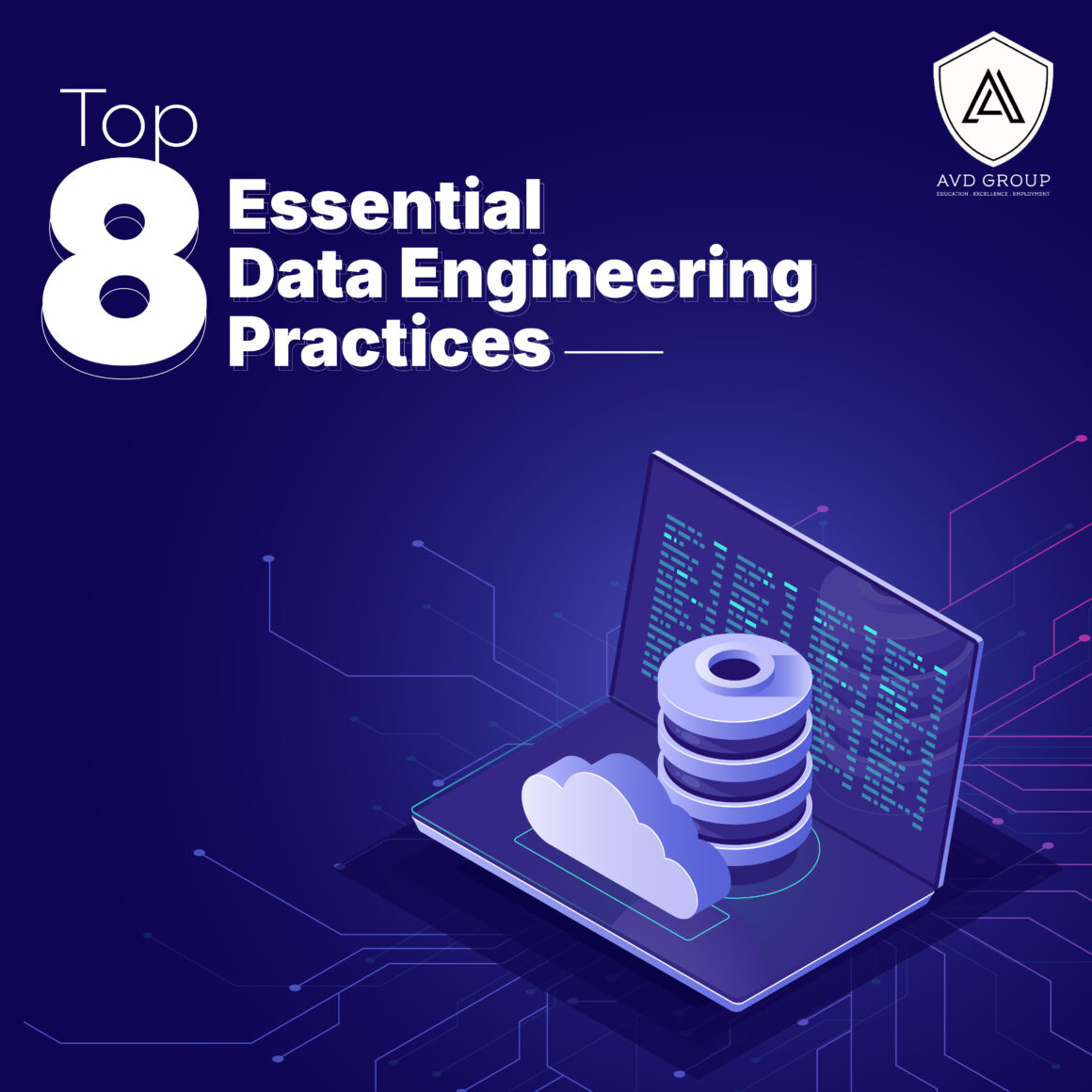With the growth of Analytics, AI, and ML, there has been a rise in data systems and data users. New businesses, technologies, and tools are constantly springing up in response to the ever-increasing need for more efficient data storage, processing, and analysis. It has become crucial for data engineers to follow industry standards as they explore, build, and implement in this dynamic and rapidly evolving sector.
Want to get started on upskilling your data engineering skills? Join the Advanced Data Engineering course in Aurangabad!
Common Data Engineering Practices
1. Create Tests with Automation
When it comes to data engineering, automated testing is essential for ensuring that data pipelines are accurate and reliable. By ensuring data integrity at every level of the pipeline, data engineers can be confident that the output data is accurate and reliable. Coding automated testing helps data engineers control data pipeline modifications and reduce the possibility of data loss or theft.
2. Allow Pipeline To Manage Multiple Workloads
Information constantly flows into the business from various sources, including the web, mobile, and IoT. Data pipelines must load and process data before data scientists can evaluate it and apps can use it. This has made it essential for organizations to need systems that concurrently handle a high volume of data analysis operations.
With elastic multi-cluster shared data design, a cloud-based data pipeline can manage multiple workloads simultaneously. It can distribute processing, data loading, transformation, and analytics tasks to many clusters that share the same data without causing resource contention.
3. Keep An Eye On Where The Heavy Lifting Happens
Pipeline phases that involve expensive steps that use a lot of storage and computing power are called “heavy lifting.” To reduce its effect, follow these guidelines:
- Maintain resource-heavy activities’ output and resilience by isolating them from the pipeline.
- Avoid processing rows one by one, mainly when dealing with massive datasets.
- Choose the right pipeline approach.
- It is generally wise to share high-quality data generated in the data warehouse with the company after significant use of resources.
4. Switch To Data Streaming With Batch Insertion
With the constant data flow, periodic batch ingestion can fail to record up-to-the-minute trends. This could lead to disastrous outcomes such as data fraud, breaches, and low profit. Enabling continuous streaming ingestion reduces pipeline latency and makes real-time data available to the company.
Join the advanced data engineering to learn about the various streaming capabilities and their interaction with designs to set up pipelines to manage streaming and batch data.
5. Make The Data Flow Diagram’s Scope Clear And Transparent
In software engineering, one of the most important things to remember while making data flow diagrams is to keep things simple and easy to understand. A well-defined DFD will show the system’s boundaries. Data transformation processes, sources, and destinations are all external entities that must be identified to complete this step. Avoid misunderstandings and ineffective teamwork as they could lead to excessive complex details.
6. Integrate Scalability
Organizations use different tools to analyze and make sense of their data. When building the data pipelines, ensure that these tools are compatible. You can integrate third-party code into your data flow using APIs and pipelining tools.
7. Maintain The Reliability Of The Data Pipelines
Ensuring data reliability is not easy, and once a data pipeline is up and running, apps that use the data quickly establish further dependencies. With the business’s changing needs, schema modifications are inevitable, including adding, removing, and renaming columns.
The best strategy is to design pipelines that can withstand these schema changes. Another way to build robust pipelines is to include the capability to manage and isolate mistakes. Sending incorrect data downstream is never a good idea because fixing it later might be expensive. To avoid these kinds of problems:
- Check the data for accuracy and validate it.
- Detect issues and stop the pipeline or filter out incorrect records.
- Inform downstream users and apps of mistakes and delays.
- Find the source of faults and debug them using the right tools.
Building data pipelines is one of the major roles of data engineers. Signing up for data engineering courses Aurangabad can help students to master that skill.
8. Keep The Flow Of Data Consistent
Using data flow diagrams (DFDs) and data pipelines correctly requires consistent labeling, syntax, and data flow. A data engineer’s job is to ensure that information moves rationally from outside sources to internal processes, data stores, and other operations. There must be no cyclical data flows, and data must not vanish or reappear without warning. If the data flows consistently, the DFD will truly reflect how data is processed in the actual world.
Furthermore, to clarify and prevent misunderstandings, it’s important to check that the labels, arrows, and symbols are uniform throughout the design.
Summing Up
Data and code quality assurance is crucial for data engineering efforts to be successful. Applying the best practices and tools to track and maintain code and data quality guarantees strong and efficient data systems, increasing insights and business outcomes.
If you are interested in working in the data engineering field, attending an advanced data engineering course can help you grasp the many core skills needed for this role.
Join AVD Group if you wish to take a professional course. With expert guidance, hands-on training, networking opportunities, and placement support, we can help you prepare for this dynamic industry. Visit the website to learn more.








